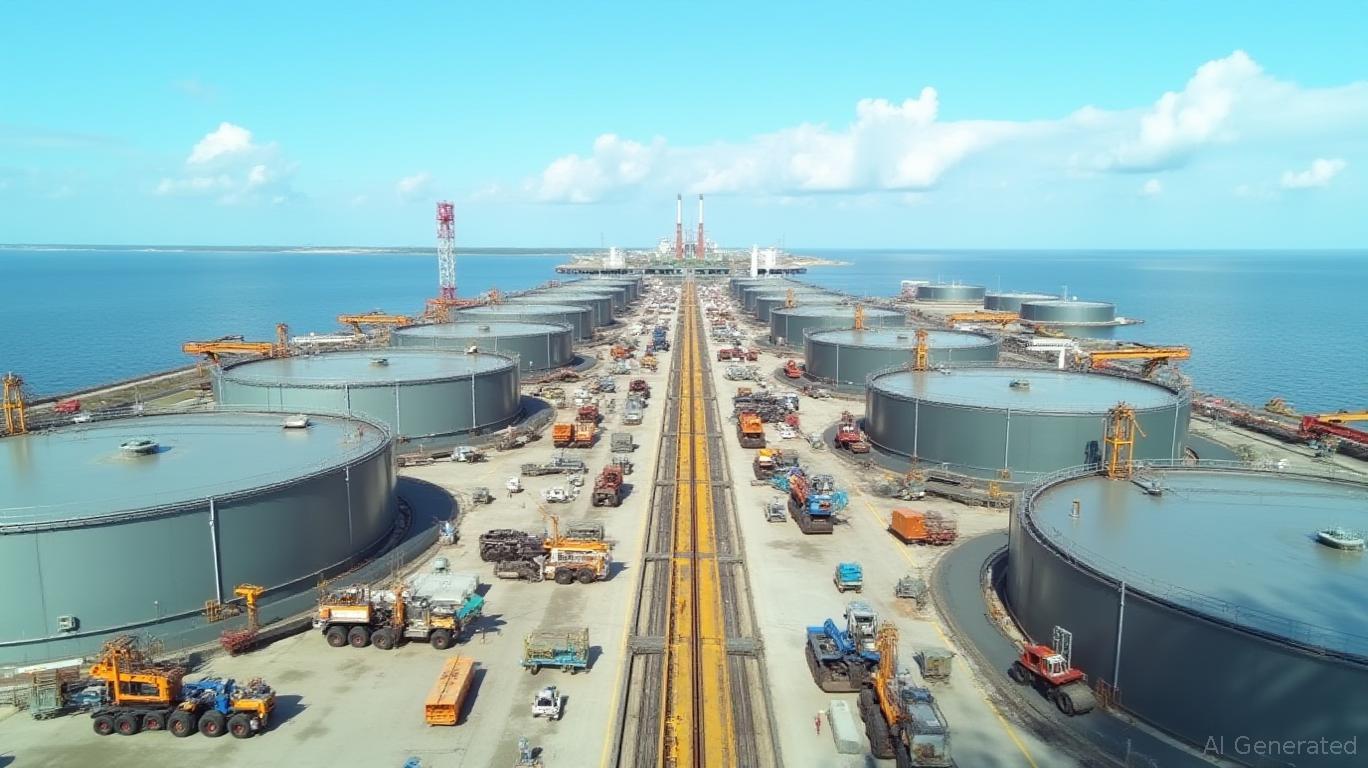Cheniere's Sabine Pass Maintenance and Expansion: Navigating Volatility to Capture LNG Dominance
The Sabine Pass LNG terminal, Cheniere Energy's flagship facility and the largest U.S. LNG export hub, is set to undergo critical maintenance in June 2025—a move that could amplify global LNG price volatility while laying the groundwork for a multi-decade growth story. As traders brace for reduced U.S. supply during the three-week shutdown, investors must also look beyond the short-term disruption to the company's ambitious expansion plans, which promise to solidify its position as a linchpin of the global energy transition.

Short-Term Volatility: A Catalyst for Price Gains
Starting June 2, the Sabine Pass plant will idle two of its six liquefaction trains for maintenance, reducing feedgas intake to an 11-month low of 3.7 billion cubic feet per day (bcfd) by June 23. This abrupt cut—down from 3.9 bcfd—will shrink U.S. LNG exports by roughly 1.5 million metric tons during the period, according to traders. With global LNG prices already elevated at $12.58/MMBtu (as of May 2025), the reduction could push JKM (Japan Korea Marker) prices higher, particularly if Asian buyers scramble to secure alternative supply amid summer demand spikes.
The timing couldn't be more precarious. Russia's ongoing gas curtailments to Europe, Qatar's delayed North Field expansion, and China's rebounding LNG imports are already tightening markets. Sabine Pass's maintenance may tip the balance, creating a short-term arbitrage opportunity for investors in Cheniere's stock (LNG).
Historically, LNG prices and Cheniere's stock have moved in tandem, with the company's profitability directly tied to global demand. A JKM spike in June could catalyze a surge in LNG's share price, especially if traders anticipate a prolonged supply squeeze.
Long-Term Dominance: The $20Mtpa Expansion Play
While the June maintenance creates volatility, Cheniere's true value lies in its long-term growth trajectory. By 2030, the Sabine Pass Liquefaction Expansion Project (SPL) aims to boost annual capacity by 20 million metric tons (mtpa), leveraging two new trains and debottlenecking upgrades. This expansion is underpinned by $10.5 billion in liquidity and a portfolio of ironclad gas supply agreements.
A standout deal is the May 2025 Integrated Production Marketing (IPM) pact with Canadian Natural Resources, securing 140,000 MMBtu/day of Canadian gas starting in 2030—enough to produce 0.85 mtpa of LNG priced to the JKM. Combined with prior agreements, these contracts now cover 7.85 mtpa of the expansion's output, with binding commitments on 70% of the new capacity. Key buyers like BASF, Equinor, and KOSPO ensure steady demand, while Cheniere's role as a marketer—not just an operator—maximizes margins.
The expansion's financials are equally compelling. The company's 2025 guidance of $6.5–7.0 billion in EBITDA and $4.1–4.6 billion in distributable cash flow signal confidence in its ability to fund growth without over-leveraging. Crucially, the project's Final Investment Decision (FID) for Train 7 is expected by early 2027, with operations targeting 2030—a timeline that aligns with Asia's peak LNG demand period.
Risks, but Limited Horizons
Skeptics will point to hurdles: the federal moratorium on new LNG terminals, regulatory delays, and potential cost overruns. Yet Cheniere has already secured FERC approval and FTA export authorizations, and its pre-existing agreements may exempt it from the moratorium. Meanwhile, the $12+/MMBtu JKM price—up from $7 in 2023—provides a robust floor for returns.
Why Act Now?
The June maintenance is a near-term catalyst, but the real prize is Cheniere's evolution into a $100 billion LNG powerhouse by 2030. With 90% of its export capacity already contracted, the company is de-risking its growth while global LNG demand is projected to grow by 40% over the next decade.
Investors who wait for the expansion's FID in 2027 may miss the upside as JKM prices climb and geopolitical tensions persist. Instead, buying now—during the maintenance-induced volatility—offers a dual opportunity: capitalizing on short-term price spikes and locking in exposure to a long-term structural trend.
Cheniere's story is no longer just about energy exports. It's about owning a critical artery in the global shift away from fossil fuels—a transition where LNG remains the least-bad option. The Sabine Pass terminal, and its expansion, will be at the center of this story. Don't miss the train.
The path forward is clear: volatility now, dominance later. The question is, will you be on board?

Comments
No comments yet